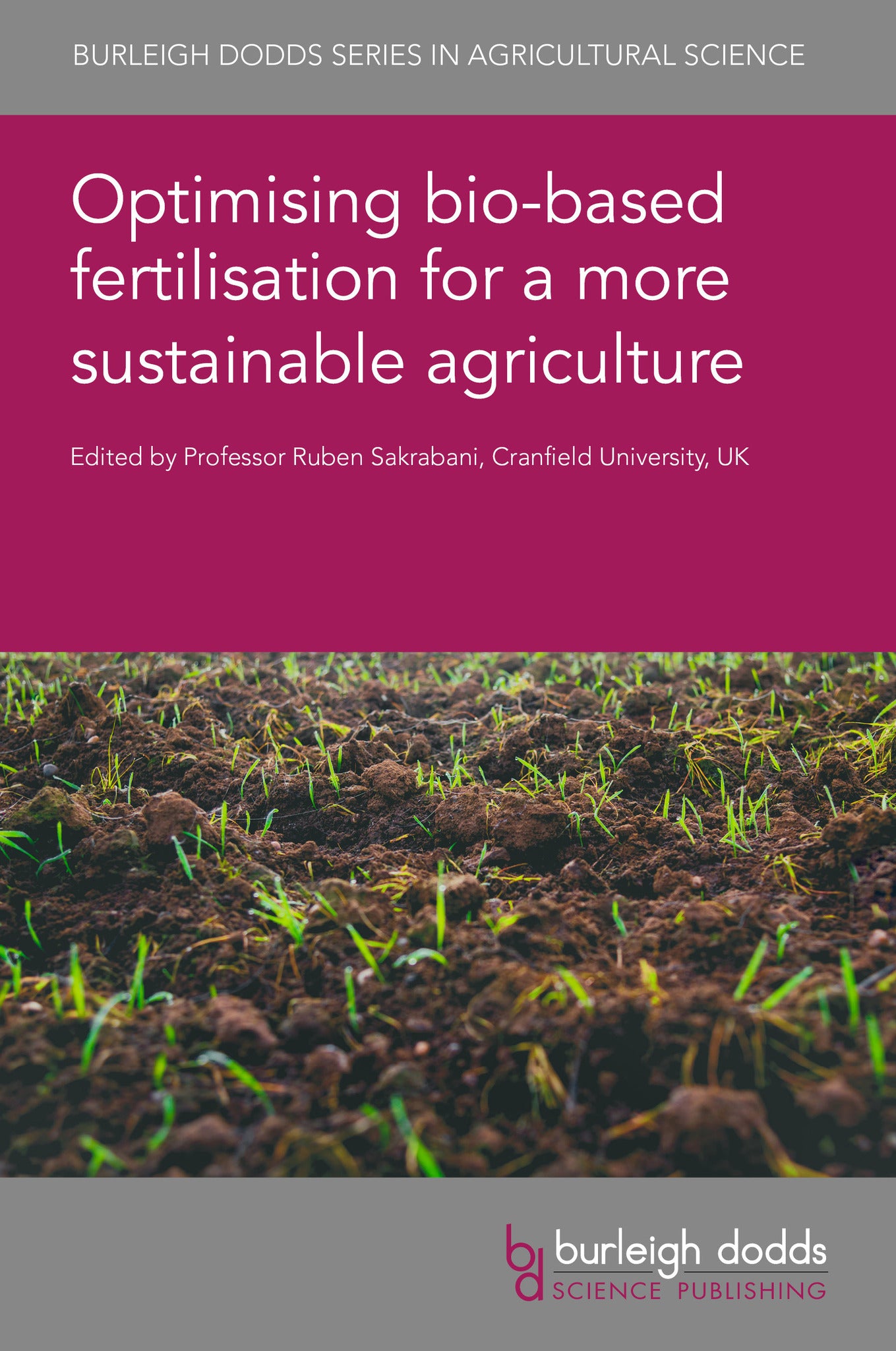We're sorry. An error has occurred
Please cancel or retry.
Optimising bio-based fertilisation for a more sustainable agriculture

Improvements in plant nutrition and fertilisation are central to any transition to a more sustainable agriculture. In addition to ways of improving nutrient use efficiency, a key area to investigate further is the transition from relying primarily on inorganic fertilisers to a greater use of organic sources of nutrition.
Optimising bio-based fertilisation for a more sustainable agriculture provides a comprehensive overview of the recent research undertaken in this area, focussing primarily on the role of differing types of soil amendments and their contribution to improvements in soil organic matter content, nutrient availability, crop growth and yields. The book also reviews recent advances in biostimulants, such as plant growth-promoting rhizobacteria, and considers optimising their use to promote crop health and nutrient use efficiency.

TECHNOLOGY & ENGINEERING / Agriculture / Sustainable Agriculture, Sustainable agriculture, TECHNOLOGY & ENGINEERING / Agriculture / Agronomy / Crop Science, TECHNOLOGY & ENGINEERING / Agriculture / Agronomy / Soil Science, Agronomy and crop production, Soil science and management

Part 1 Advances in soil amendments
- 1.Optimising crop residues as soil amendments: Marcelo Galdos, Agreena, UK;
- 2.Optimising cover crops for soil health: Rob Myers, University of Missouri, USA;
- 3.The use of vermicompost and biochar as soil amendments: Parveen Rupani, Cranfield University, UK;
- 4.The potential of organo-mineral fertilisers: Ruben Sakrabani, Cranfield University, UK;
- 5.Optimizing use of anaerobic digestate as a soil amendment: Christina van Midden, Agri Food & Biosciences Institute (AFBI), UK;
- 6.Optimising poultry litter for soil improvement: Xiuping Jiang, Clemson University, USA;
- 7.Optimising on-farm management and use of slurry to minimise its environmental impact: Lisa Norton, UK Centre for Ecology and Hydrology, UK;
- 8.Optimising use of frass as a soil amendment: David Houben, UniLaSalle, France;
Part 2 Advances in biostimulants
- 9.Optimising use of biostimulants: using plant growth-promoting rhizobacteria (PGPR) to promote crop nutrient use efficiency and other properties: S. Pereira, Universidade Catolica Portuguesa, Portugal;
- 10.Understanding and promoting existing communities of plant growth-promoting rhizobacteria (PGPR) in agricultural soils: Zakaria M. Solaiman, University of Western Australia, Australia;
- 11.Optimising functionality of phosphate-solubilising microorganisms (PSM) in promoting crop nutrient use efficiency and health: Nelly Raymond, University of Copenhagen, Denmark;
- 12.Understanding and optimising the role of cyanobacteria in promoting crop health and nutrient use efficiency: Nouriddine Bouaicha, University of Paris-Saclay, France;
- 13.Understanding and optimising the use of amino acid-based biostimulants in promoting crop nutrient use efficiency and health: Wenli Sun, Chinese Academy of Agricultural Sciences, China;
- 14.Understanding and optimising the use of inorganic salts as biostimulants in promoting crop nutrient use efficiency and health: John Havlin, North Carolina State University, USA;
- 15.Understanding and optimising the use of algae in promoting crop nutrient use efficiency and health: Domenico Ronga, University of Salerno, Italy;




